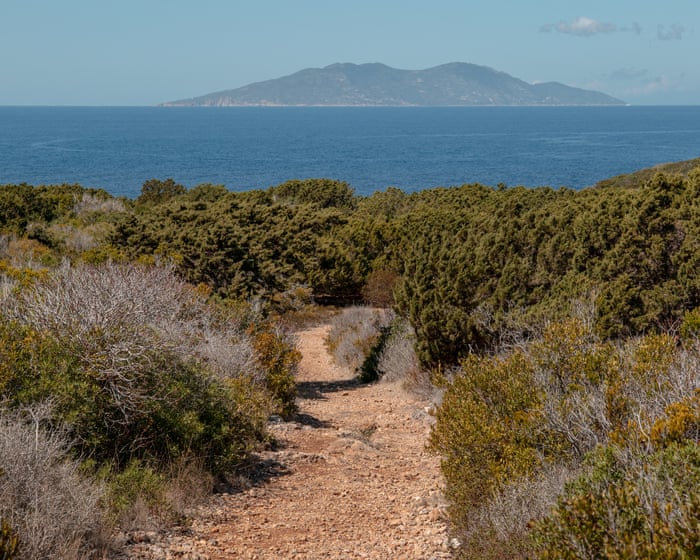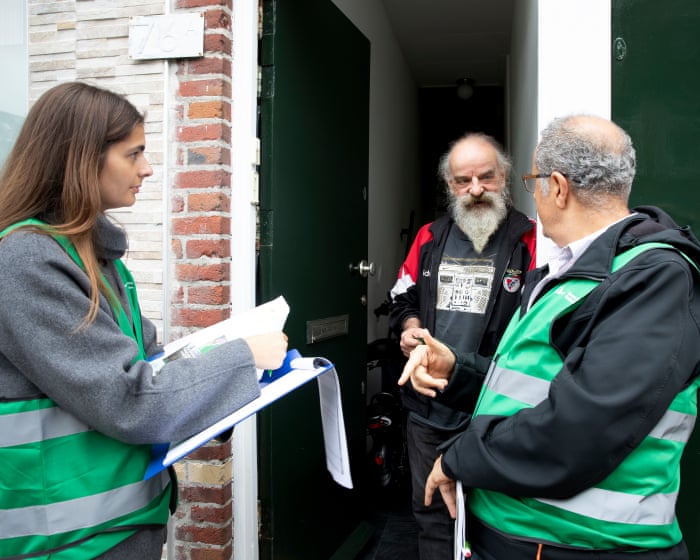Off the coast of Tuscany lies a small, crescent-shaped island called Giannutri, just an hour from mainland Italy. With only two beaches for boats to land, it draws hundreds of tourists in the summer. Visitors hike to the red and white lighthouse at the southern tip and swim in the clear waters. In winter, the population drops to just 10 residents. The island’s rocky ridges are covered in rosemary and juniper bushes, and in warmer months, the air is filled with the scent of flowers and the gentle buzz of bees.
“The people who live here are mostly fishermen, those who enjoy solitude, or retirees. Everyone has their own story,” says Leonardo Dapporto, an associate professor at the University of Florence.
Giannutri’s remote location made it an ideal open-air laboratory for studying bees. Scientists were drawn to the island to explore a question that has long fascinated ecologists: are honeybees contributing to the decline of wild bee species?
To find out, they conducted a bold experiment. Although Giannutri is too far for honeybees to reach naturally, 18 hives were introduced in 2018, creating a contained and recently established population. Researchers received permission to temporarily shut the hives, effectively removing most honeybees from the island.
When the study began, the number of people on the island doubled as teams of scientists spread out across the scrubland to track bees. They closed the hives on certain days during peak foraging times, keeping the honeybees inside for 11 hours a day. Locals were skeptical. “They thought we were doing something silly and pointless,” Dapporto recalls. But the results were striking.
“My first reaction was ‘wow,’” says lead researcher Lorenzo Pasquali from the University of Florence. “All the data pointed in the same direction.”
The findings, published earlier this year in Current Biology, showed that in the four years after honeybees were introduced, populations of two key wild pollinators—bumblebees and anthophora—dropped by an alarming 80%. When the honeybees were confined, there was 30% more pollen available for other pollinators, and wild bees were seen more often. Scientists noticed that during these lockups, wild bees took their time pollinating flowers, showing different foraging behavior. “The effect is clear,” says Dapporto.
A Global Bee Battle
The western honeybee (Apis mellifera) is the world’s most abundant pollinator in wild ecosystems. Originally native to Africa, the Middle East, and southern Europe, honeybees have been introduced by humans to every continent except Antarctica. The competition observed on this small Italian island is likely happening in ecosystems worldwide.
While honeybee numbers are rising due to commercial beekeeping, native pollinators are declining globally because of habitat loss, climate change, and agricultural chemicals. We are only starting to grasp how the honeybee boom might also harm wild pollinators.
In southern Spain, for example, where honeybee numbers have more than tripled since the 1960s, research shows that managed honeybees move into flower-rich woodlands after orange crops finish blooming, increasing competition with wild pollinators.
During California’s annual almond bloom, about 90% of the managed honeybees in the U.S. are brought in to pollinate the orchards. This concentration further highlights the pressure on wild bee species and the broader ecosystem.Honeybees are brought in to pollinate crops, with beekeepers transporting hives across the country to meet demand. “For this roughly month-long period, the impact of honeybees on native pollinators is likely enormous,” says Dillon Travis from the University of California San Diego. During the off-season, when honeybees are less in demand, beekeepers often place them in wild ecosystems. “Native pollinators have to compete with millions of honeybees for limited food sources.”
Most of the managed honeybees in the U.S. are used to pollinate during California’s almond bloom. If conditions are favorable, honeybees can go feral and establish colonies in the wild. A 2018 study found honeybees present in 89% of natural ecosystem sites surveyed. In California, feral honeybees are increasingly appearing in large numbers in natural areas far from almond fields.
Each spring, after the winter rains, San Diego’s coastal scrub landscape comes alive. Sagebrush, white sage, and buckwheat unfurl their leaves, filling the warm air with sweet scents. These sights and smells greeted graduate student Keng-Lou James Hung when he began studying this part of southern California in 2011 at age 22, after a respected biologist told him it was one of the richest bee habitats on Earth.
The area has all the signs of a pristine ecosystem: no tractors have plowed the land, no cattle have grazed it, and few people visit. “You can compare it to primary growth Amazonian rainforest in terms of how intact and undisturbed the ecosystem is,” says Hung.
However, when Hung started his research, what he found surprised him. “I got to my field sites and all I was seeing were honeybees,” he recalls. “Imagine being an avid birdwatcher: you arrive at a pristine forest and all you see are feral pigeons. That’s what it was like for me when I set foot in this habitat. It was a shock.” Honeybees were everywhere—nesting in utility boxes, ground squirrel burrows, and rock crevices.
In July, Hung—now an assistant professor at the University of Oklahoma—published a paper finding that 98% of all bee biomass (the total weight of bees) in that area consisted of feral honeybees. According to the study, published in the journal Insect Conservation and Diversity, they removed about 80% of pollen on the first day a flower opened.
Such high pollen removal rates leave little for the region’s more than 700 native bee species, which rely on pollen to raise their young. Some of these species haven’t been seen for decades.
Hung believes honeybees’ social structure gives them an advantage. Using their “hive mind,” they communicate plant locations and collect most of the pollen early in the morning before native bees start foraging. Most other bees operate alone, making decisions independently.
“It’s like a local grocery store trying to compete against Walmart,” says Hung. “Once honeybees have escaped and established themselves, there’s very little we can do to stop them. They’re very powerful and resilient creatures.”
In 1956, some experimental “Africanized” honeybees were accidentally released from a research apiary in São Paulo, Brazil. They spread across South and Central America and into California. Their expansion has been described as one of the most spectacular biological invasions in modern times.One of the most dramatic biological invasions in history is currently underway, with far-reaching ecological consequences.
Habitat fragmentation, agricultural pesticide use, and rising temperatures are major factors in pollinator decline. In regions like San Diego, however, non-native honeybees also appear to play a significant role. “It’s hard to imagine a scenario where a single species consumes four-fifths of all pollen without seriously affecting the ecosystem,” says researcher Hung.
The impact extends beyond native wild bees, potentially disrupting entire ecosystems.
Studies confirm that plants in San Diego County are less healthy when pollinated by non-native honeybees. This can lead to fewer seeds germinating, and those that do may be smaller and produce fewer flowers. Researcher Travis warns this could trigger an “extinction vortex,” where plant health declines over generations until survival becomes impossible. “I know of no studies showing honeybees are beneficial where they aren’t native, outside of farm settings,” he adds.
In non-native regions like parts of Australia and America, honeybee densities can reach up to 100 colonies per square kilometer. The situation differs in Europe, where honeybees are indigenous.
For example, in the UK, recent research estimates around 75,000 wild honeybee colonies exist—the first effort to quantify their numbers. This suggests over 20% of the country’s honeybee population may be wild. “In Europe, honeybees are native, and low densities of wild colonies are a natural part of many ecosystems,” explains Oliver Visick of the University of Sussex.
Visick has found up to four wild colonies per square kilometer in historic deer parks in Sussex and Kent. “At these levels, wild colonies are unlikely to harm other pollinators,” he notes.
In areas where honeybees are introduced, scientists recommend better guidance for large-scale beekeepers on hive placement after crop blooming, to minimize effects on native species. In sensitive zones like islands, relocation or removal may be necessary.
Take Giannutri, an island in Italy’s Tuscan Archipelago National Park. After researchers shared their findings with park authorities, beekeeping was banned. The island has been free of honeybees for over a year, serving as a warning to other protected areas considering introducing them. Since removal, at least one monitored species has shown a slight rebound.
When honeybees were present, they consumed vast amounts of pollen. After their removal, pollen availability for native pollinators increased by 30%. The situations in Giannutri and San Diego reveal that honeybees are not always the environmental guardians they’re made out to be. They also challenge the widespread belief that they are the best solution to declining pollinator numbers. Left unmanaged, they can profoundly impact fragile ecosystems they are often thought to protect.
Returning to Giannutri without honeybees felt unusual to researcher Pasquali. “We were used to seeing them everywhere. It was satisfying to observe the island in this new state,” he says.
Frequently Asked Questions
Of course Here is a list of helpful FAQs about the topic of honeybees and their environmental impact inspired by the idea of an island outlawing beekeeping
General Beginner Questions
Q Why would an island outlaw beekeeping Isnt that extreme
A It might seem extreme but the goal is to protect native pollinators On some islands like the one in the news introduced honeybees can outcompete local bees and birds for food and nesting sites
Q I thought honeybees were good for the environment Arent they
A They are excellent for agriculture and pollinating many of our food crops which is why we see them as good However in certain natural ecosystems where they are not native they can disrupt the local balance
Q Whats the difference between a honeybee and a native bee
A Honeybees are a single species that live in large managed hives and produce honey Native bees refers to thousands of local species that have evolved in a specific region and often live solitary lives or in small colonies
Q Dont all bees just help with pollination
A Yes but not equally Some native plants are specially adapted to be pollinated only by certain native bees or birds Honeybees might not pollinate them effectively or they might take all the pollen and nectar leaving none for the native species that depend on it
Environmental Impact Problems
Q How exactly do honeybees harm native species
A They primarily cause harm through competition A single honeybee hive can have tens of thousands of bees that aggressively collect resources making it harder for smaller native bee populations to find enough food to survive and reproduce
Q Are honeybees an invasive species
A Outside of their native range yes they are considered an invasive species They were brought to places like North and South America by humans and can negatively impact those local ecosystems
Q But what about colony collapse disorder Arent honeybees in trouble too
A Yes managed honeybee colonies face serious threats from pesticides diseases and habitat




